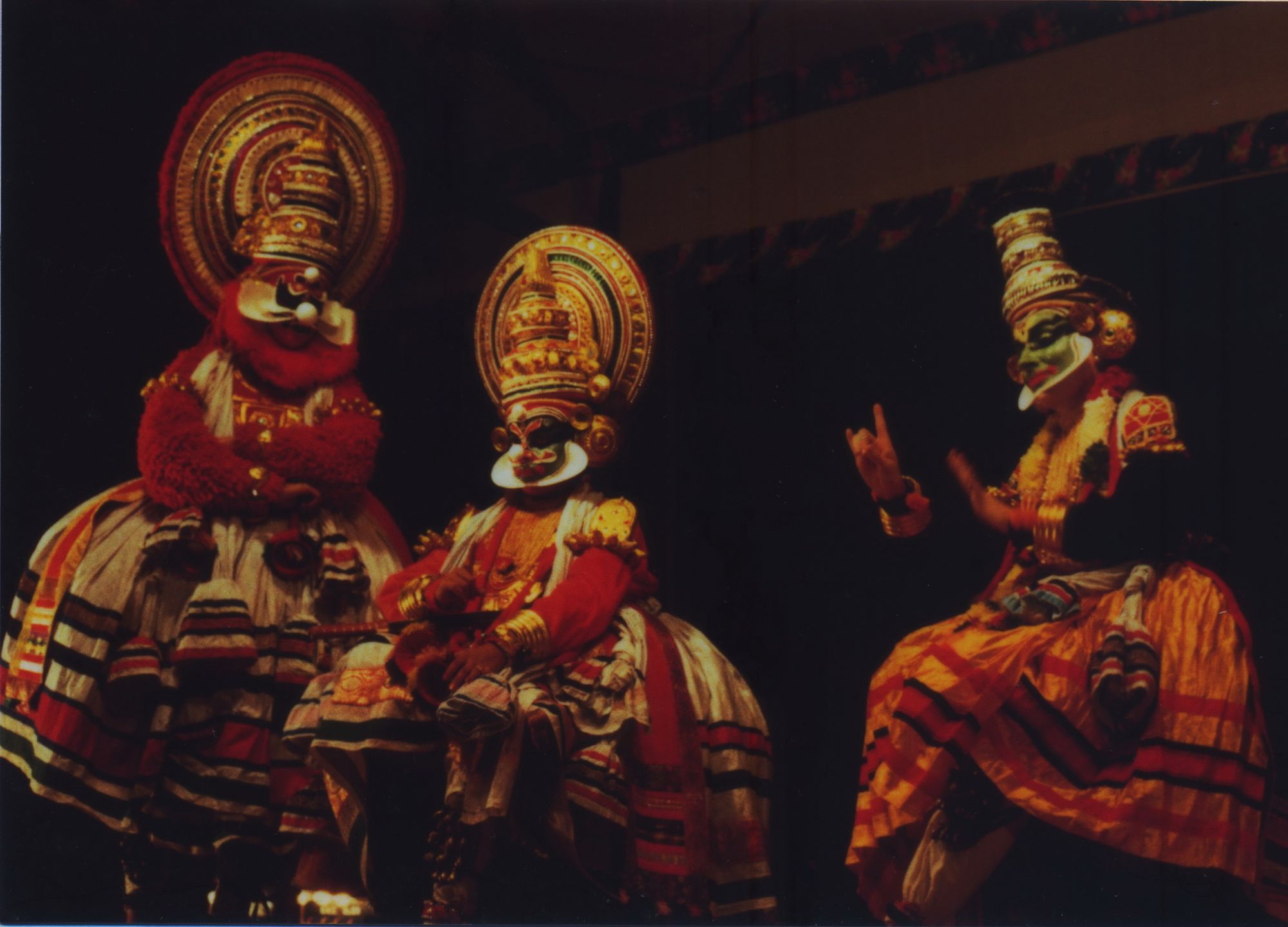Kolam to celebrate the birth anniversary of Lord Krishna
Of the various kolam created on Gokulashtami, drawing the feet of baby Krishna is a custom in Tamil-Nadu and a sign of welcoming the Divine at home. I have always been moved by the women printing with their fists dipped in wet rice flour, tiny footprints from the threshold to the altar.
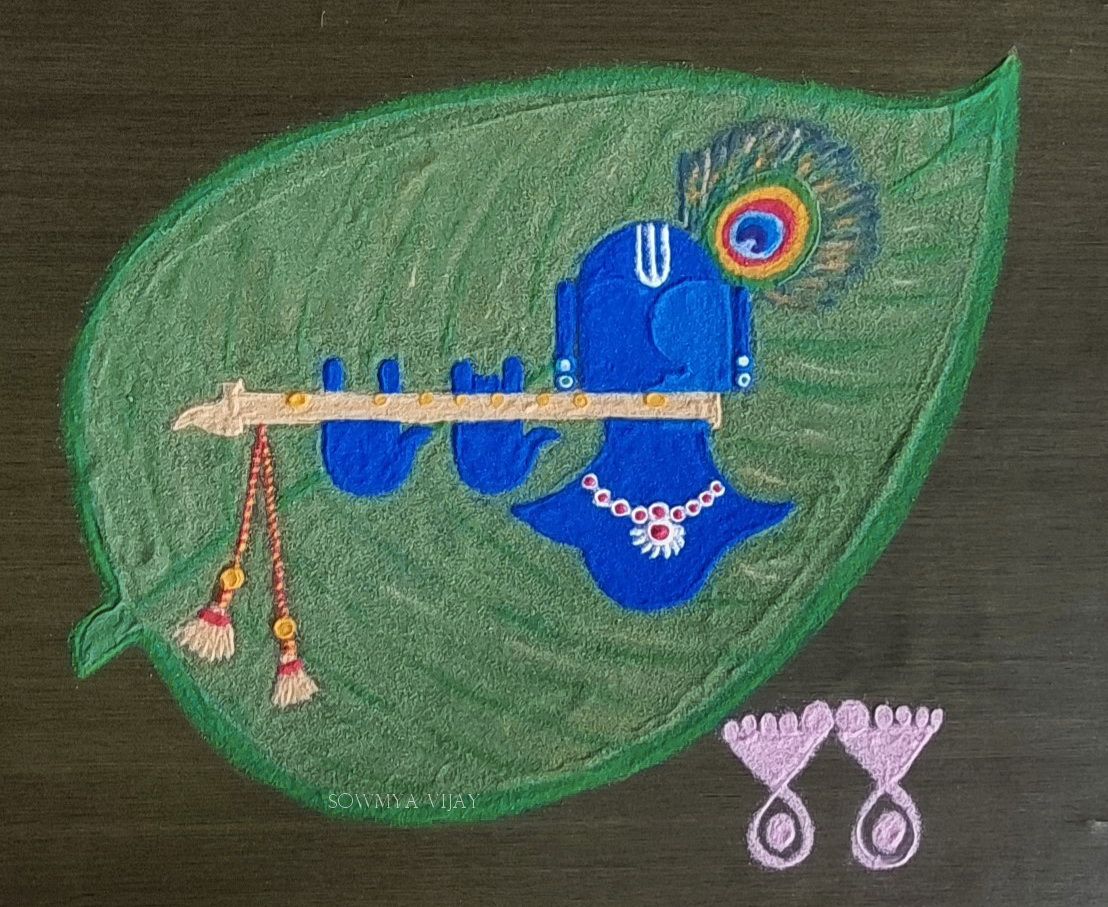
Krishna Janmashtami, also known as Gokulashtami in the South or Krishnashtami, is an annual Hindu festival that celebrates the birth anniversary of God Krishna, the eighth incarnation of Vishnu, the preserver and protector of the universe. He was born in Mathura as the son of Devaki and Vasudeva. However, Devaki's brother Kamsa had sent the couple to jail before Krishna was born; a divine prophecy had foretold that the eighth child of Devaki and Vasudeva would kill Kamsa. Soon after Krishna's birth at midnight, his father, helped by some divine power witnessed the prison gates opened, and left the place carrying the divine child across the Yamuna River to Gokula where he entrusted the child to foster parents Nanda and Yashoda who raised him as their own son.


Krishna Janmashtami is an important festival in Mathura and Vrindavan (Uttar Pradesh), the birthplace of Krishna. It is also popular among the Hindu Vaishnava communities. In general, devotees observe the day by fasting, praying at the temple or at home, and they adorn Krishna statues with clothes, crown, and flute.
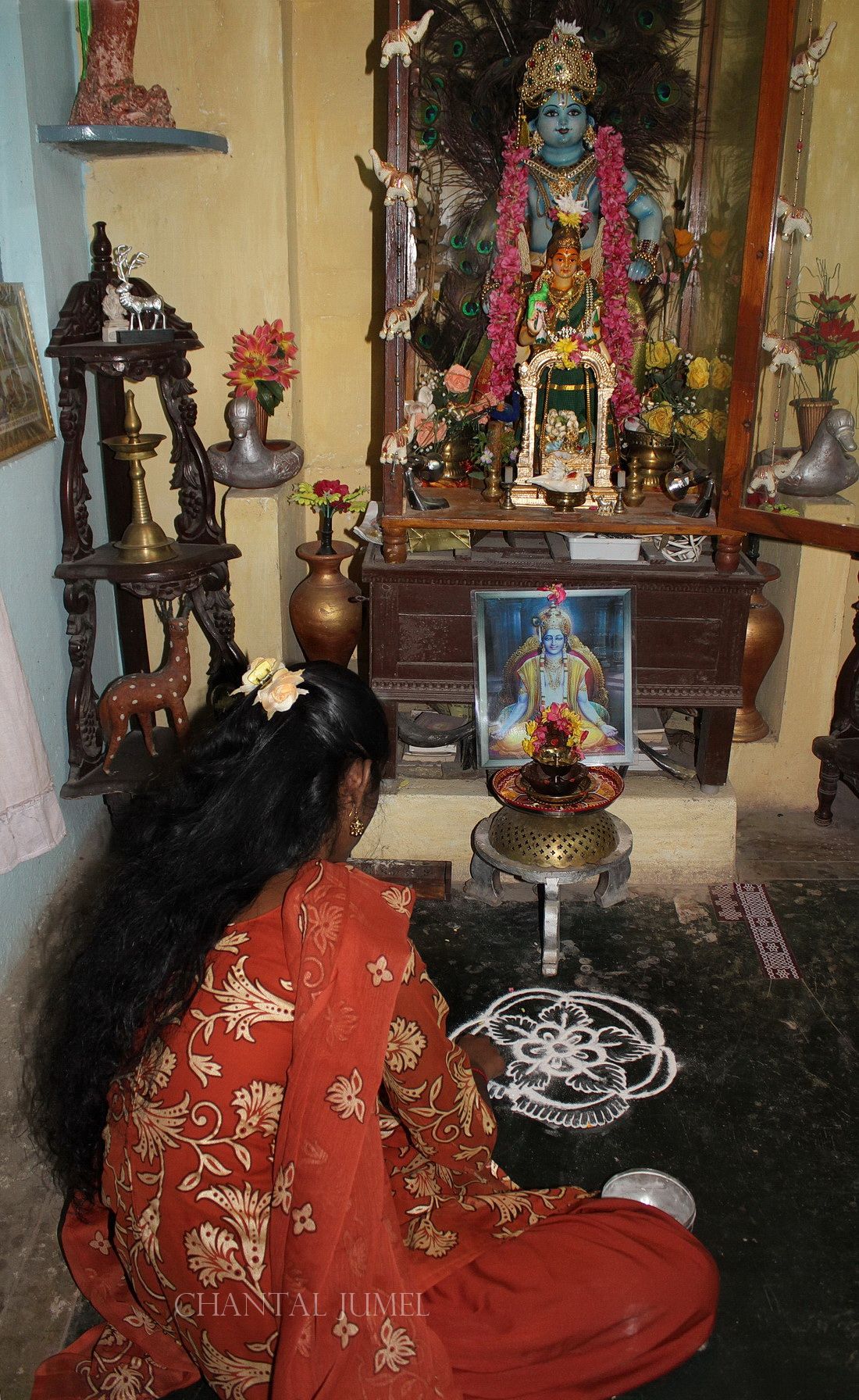

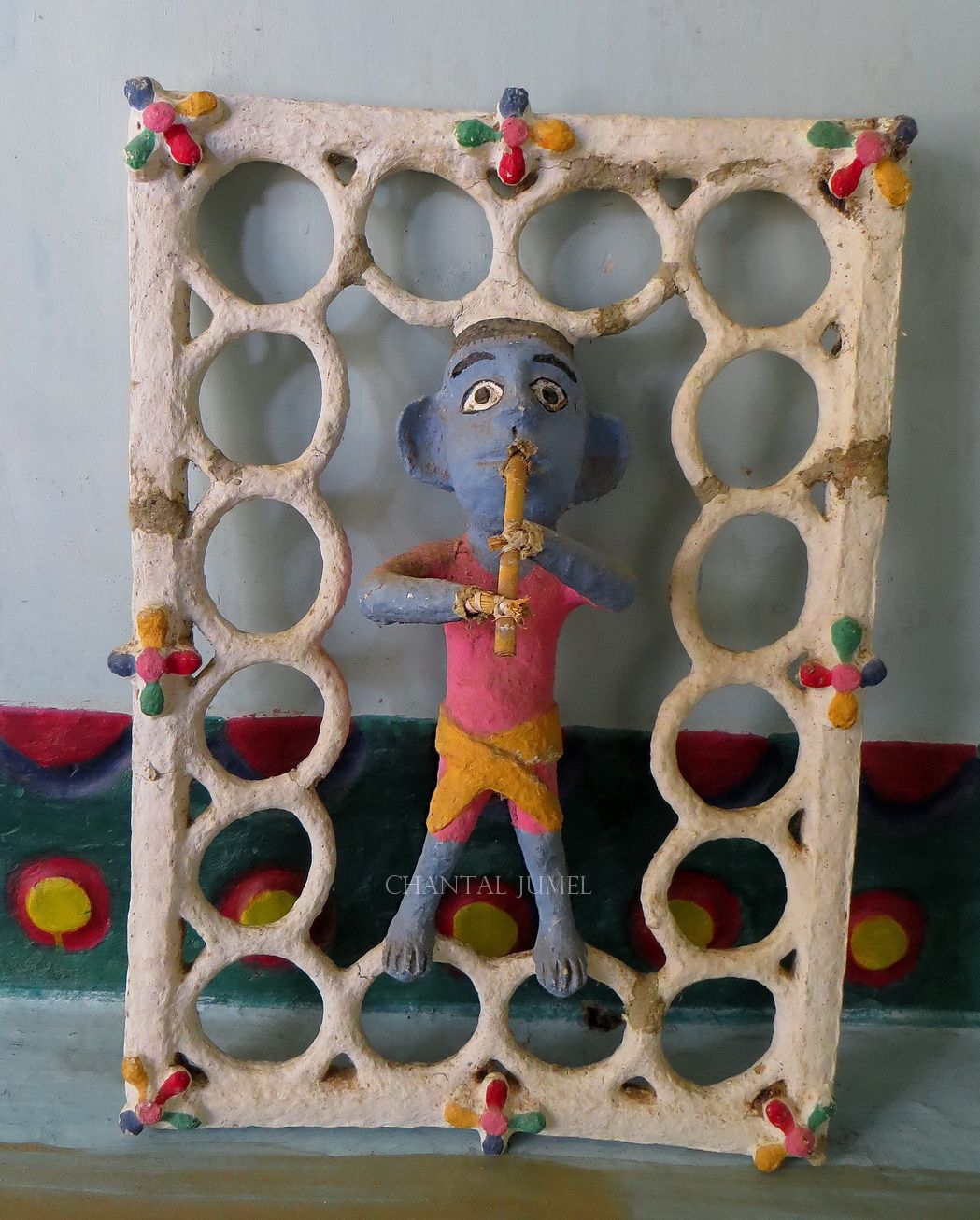



Many teams of amateur artists in north-eastern states of India (Manipur, Assam), and in parts of Rajasthan and Gujarat organize devotional singing gatherings and dance-dramas performances called Rasa Lila or Krishna Lila to narrate Krishna's life and deeds. It is a time in the year when Krishna costume contests are conducted, photos and videos are taken and shared on social medias. On that day, dressing up babies or children as Krishna or Gopis (cow-herding girls) is a popular Hindu tradition.
Kolam of Krishna "the butter thief"
Among Hindu Gods and Goddesses, Krishna is also worshipped as a child-god. Krishna the cowherd and protector of cattle is often depicted as a mischievous child who plays pranks to his friends. Some of the most cherished kolam representations are those where he is shown as a malicious boy stealing butter.




Flute kolam for Krishna
Krishna is pictured in Hindu mythology as a flute playing cowherd with peacocks feathers on his crown.
"When Krishna played his flute to call the cows, the river stopped flowing, her waters stunned with ecstasy. Instead of swimming or flying, the cranes, swans, ducks, and other birds closed their eyes and entered a trance. The cows and deer stopped chewing; their ears raised. They became motionless like painted animals." Srimad Bhagavatam 10. 35




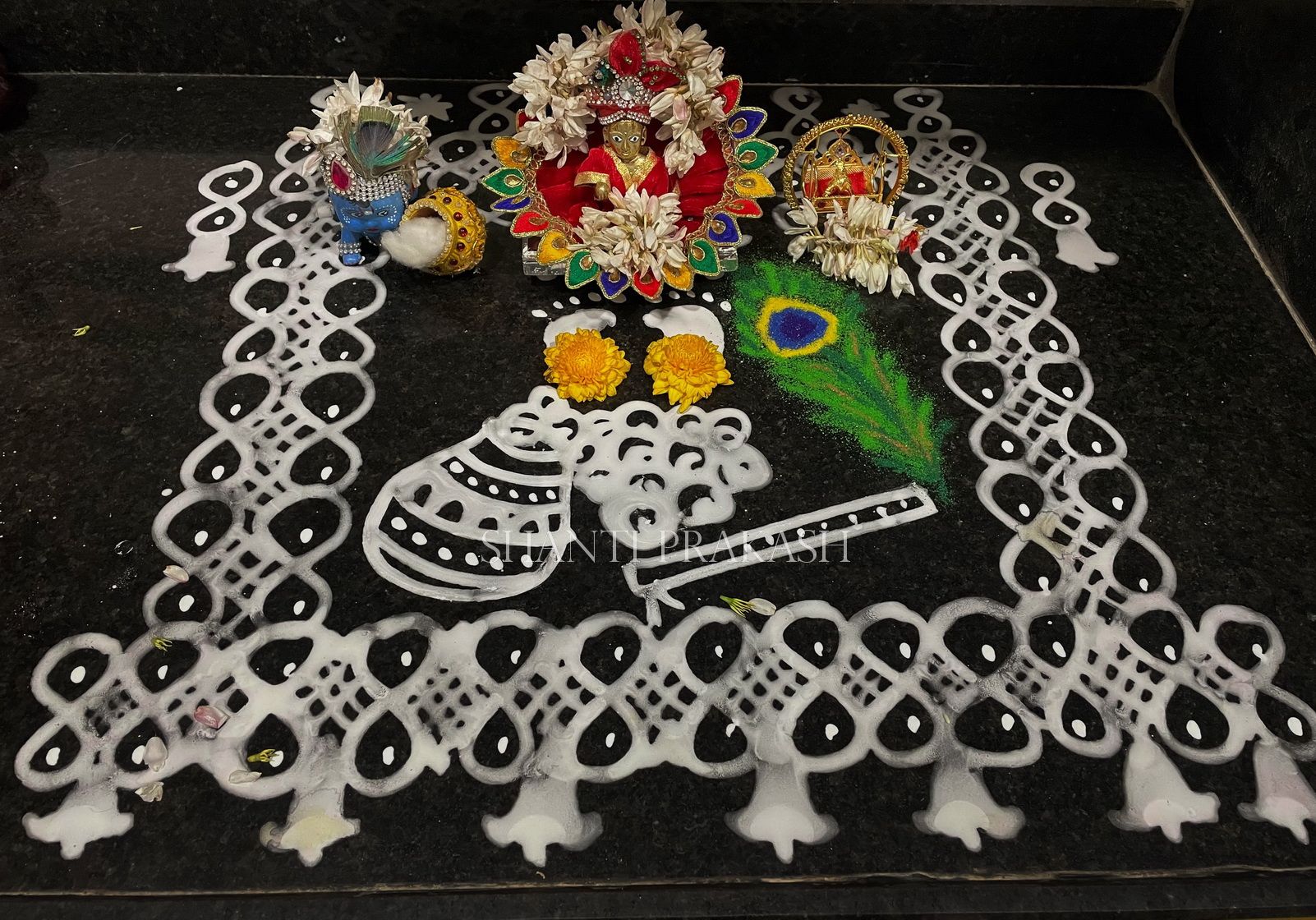
Kolam of Krishna's feet
The veneration of the feet of gurus, deities, or elders is a deep-rooted gesture in Indian culture. This gesture symbolizes deep respect regarding age, life achievements, and wisdom of the person whose feet are being touched. Indians believe that when a person touches the feet of their elders, he or she gains humility and is in turn blessed with knowledge, strength, and fame. Inviting the deity's presence can manifest by painting or carving their feet. Of the various aspects of Gokulashtami puja, drawing the feet of baby Krishna is a custom in Tamil-Nadu and a sign of welcoming the Divine at home. I have always been moved by the women printing with their fists dipped in wet rice flour, tiny footprints from the threshold of the house all the way to the domestic altar. There is also a Tamil term of endearment known as Kanna and referring to Krishna; over the years, I have been lovingly called Kanna by close Tamil friends.




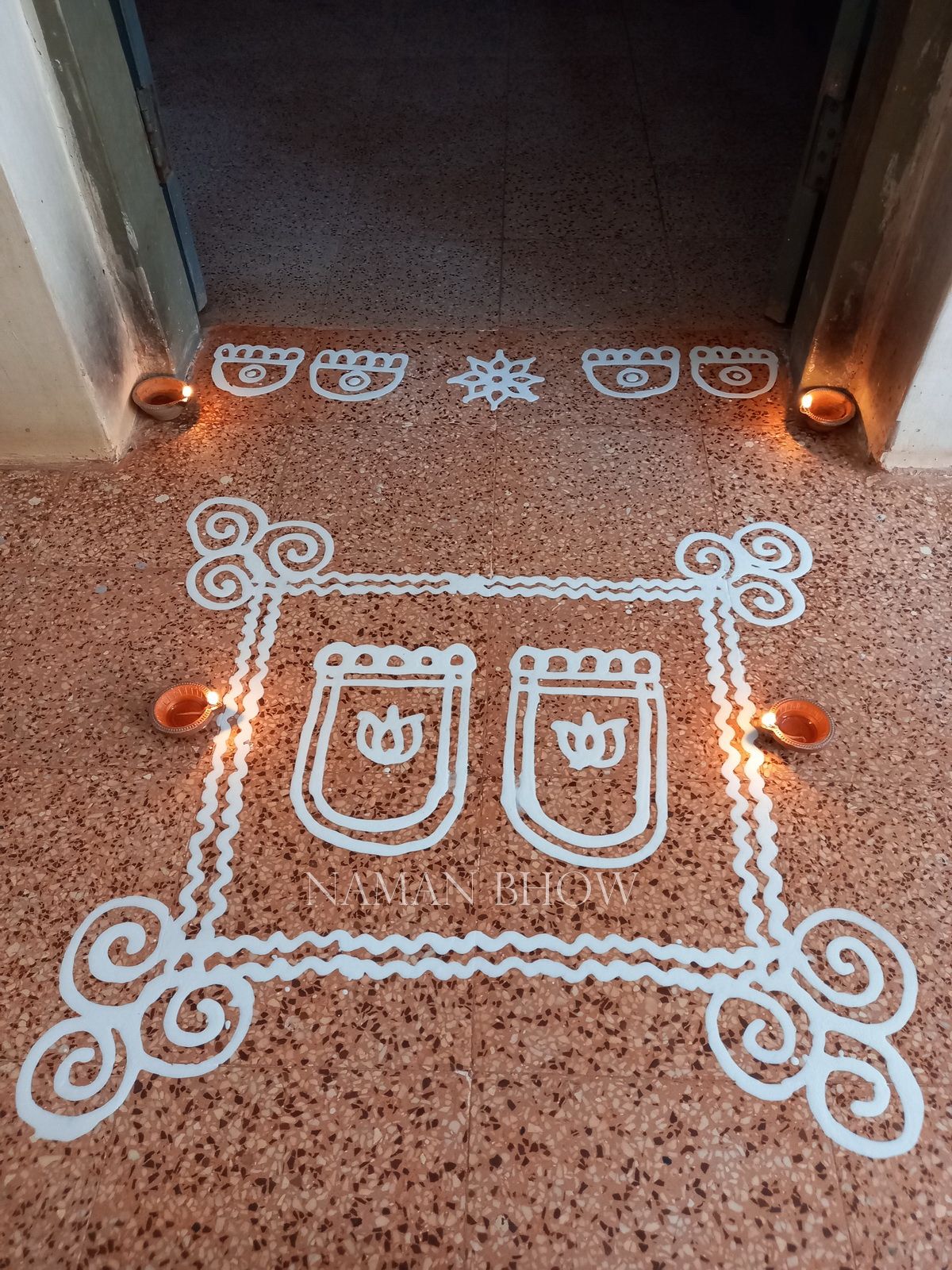




Acknowledged as one of the greatest Carnatic music composers, the composition Vandaduvum Ponaduvum by Uthukkad Venkata Subbaiyer (1700-1765) reveals the deep devotion that he felt towards Krishna.
காலினில் வழிந்த தயிர் கமலமலர்க்கோலமிடகையில் வழி வாரும் வெண்ணை கானக்குழல்மூடியிட
"The curd that fell on the little lord’s feet gave way to beautiful kolam. Let these kolam too blossom at His lotus feet.
Cradle kolam for Krishna
Thottil kolam or cradle kolam are drawn on a new-born naming ceremony, and on auspicious occasions like Krishna's birthday. In some places, an idol of the god is placed on a miniature oonjal (traditionally a swing anchored to the ceiling of a room with chains) and swung joyfully to welcome the advent of Krishna in their lives. Whether swing or cradle, kolam patterns are drawn in a similar way. The Tamil women refer preferably to cradle instead of the North Indian jhula or swing.










My encounter with Krishna
The first time I saw the valiant prince, the youthful cowherd playing the flute was an image in a French storybook showing a blind king on a battlefield; the blazing background suggested blood and a fierce, mercy less battle. The earth was strewn with broken spears, defeated elephants and lamenting women holding out their arms. This brutal evocation threw me into the world of Mahabharata, one of the greatest epics of India. The story of his exploits was going to occupy most of the book and part of my life. Many years after this childhood encounter, I met him again in Kerala, for my first Kathakali on stage, and which is known as arangetram literally "ascending the stage". That night I became Krishna, the friend of the Pandavas and the chariot-driver of Arjuna in Bhagavad-Gita. In the make-up room to the flickering light of oil lamps, silently, in a meditative mood, I drew the yellow stylized mark of Vishnu on my forehead, and the curved black eyebrows extending to the side of the face, framing the eyes. Gradually, the god appeared in the mirror that I was holding. I watched him guiding my fingers while drawing the lines contouring the jaw and chin with green paste. Then, came a more introspective time when I laid down, surrendering to the hands of a make-up artist (chuttikkaran) specialized in creating three dimensional elements prescribed for each type of character. The sculpted white papers embedded in rice paste and framing my face gave the impression of a mask, but as it is applied directly to the skin, one can display various emotions. The cooling rice paste, the beating of the drums at a distance, and the songs coming from the stage plunged me even deeper in the atmosphere of Indian epics. I began recalling my part through hands and finger gestures. Coming back to my senses, I sat again to view the result and applied the rest of the green paste on the cheeks. In the mirror, I had merged with Krishna described as the One as dark as monsoon clouds. Once the blue jacket was on, the bulging plaited skirt, the flowing scarves, and the vase shaped crown enhanced with dangling silver drops, I greeted my master and all the actors in the make-up room. Stepping on the stage, the singers had started the vandanaslokam or the hymn praising the deities. Standing behind the curtain, I danced my beloved choreography known as Purappad repeated morning after morning for many years when I was studying. Once the dance was over, I followed with an episode of Mahabharata epic narrating Krishna's attempts to negotiate a settlement with the opposing camp on behalf of the Pandavas. This is how I met one of the most powerful incarnation of Vishnu with lesser-known facets: Master of strategy, at the head of an army to fight the Kauravas, the supreme guide of prince Arjuna, and an accomplished charioteer.


